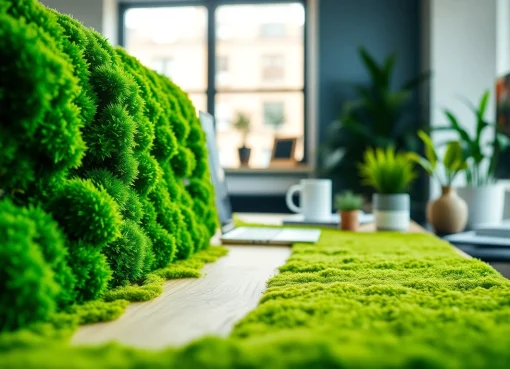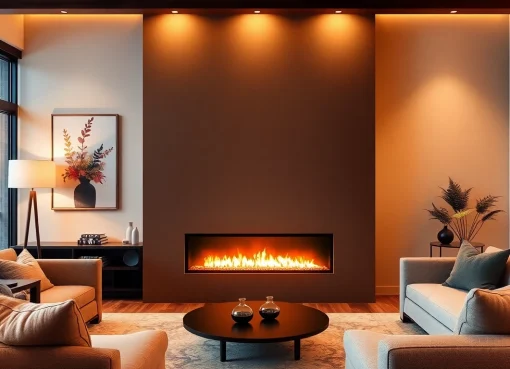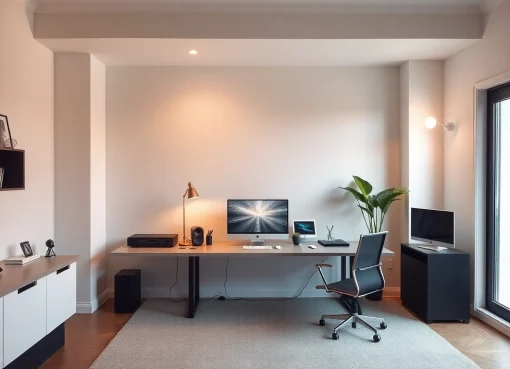Enhancing Space Efficiency with Movable Glass Partitions for Modern Interiors

Understanding Movable Glass Partitions
What Are Movable Glass Partitions?
Movable glass partitions are innovative architectural solutions designed to create flexible spaces by dividing or uniting areas as needed. Comprising large glass panels that can be installed on tracks or hinges, these partitions allow for seamless transitions between open and closed configurations. Unlike traditional wall systems, movable glass partitions facilitate openness and maximize natural light, dramatically transforming the aesthetic and functionality of a space.
Key Benefits of Using Movable Glass Partitions
The implementation of movable glass partitions yields a multitude of advantages:
- Flexibility: Easily reconfigure spaces to adapt to changing needs, making them ideal for workplaces, conference centers, and hospitality venues.
- Daylight Utilization: By allowing natural light to penetrate into interior spaces, they enhance the ambience and reduce the need for artificial lighting.
- Sound Control: Many models offer soundproofing options, which is crucial for privacy in office settings.
- Aesthetic Appeal: Their sleek and modern design elevates the overall look of any interior space.
- Cost-Effectiveness: They can reduce costs associated with permanent construction and lead times for renovations.
Common Applications in Different Industries
Movable glass partitions are applicable across a variety of sectors:
- Corporate Offices: They are widely used to create meeting rooms, collaborative areas, and private offices, promoting a dynamic work environment.
- Hospitality: Hotels utilize them for ballrooms and dining areas, providing adaptable spaces for events and gatherings.
- Education: Schools and universities implement these partitions to create multipurpose classrooms and collaborative workspaces.
- Healthcare: Hospitals use movable partitions for patient privacy and flexible treatment areas, aligning with best practices in patient care.
Designing with Movable Glass Partitions
Architectural Considerations for Glass Partitions
When considering the integration of movable glass partitions, architects and designers must consider various factors:
- Structural Integrity: Ensure that the floor and walls can support the weight and operation of the partitions.
- Building Codes: Compliance with local building regulations and accessibility standards is paramount.
- Interior Flow: Plan for how the movement of people and light will interact with the space.
Incorporating Glass Walls in Open Spaces
Open spaces benefit significantly from movable glass partitions as they can enhance the flow of natural light and visibility while providing privacy when needed. They can serve as visual barriers without sacrificing openness, making them valuable in environments such as:
- Retail stores, where they can create separate display areas without obstructing views.
- Offices, where they can help define collaborative spaces while maintaining an airy feel.
Aesthetic Choices: Framed vs. Frameless Options
Design choices regarding movable glass partitions often boil down to framed versus frameless styles:
- Framed Partitions: Offer additional structural support and can complement traditional decor; they provide more customization options in terms of finishes and colors.
- Frameless Partitions: Favor a minimalist look, providing an unobstructed view and uninterrupted lines, ideal for modern and sleek interiors.
Installation Process of Movable Glass Partitions
Preparation and Planning Steps
The success of movable glass partitions begins well before installation, with thorough preparation necessary:
- Space Assessment: Evaluate the area where the glass partitions will be installed, noting dimensions and any obstructions.
- Choosing the Right Product: Select partitions that meet your functional and aesthetic needs; consider the type of glass, hardware, and acoustic properties.
- Consultation: Involving professionals early in the planning process can help anticipate potential challenges and ensure the best outcome.
Choosing the Right Contractor for Installation
Selecting a qualified contractor is crucial for proper installation:
- Experience: Look for contractors who specialize in glass partition installations. Reviews, testimonials, and portfolios can provide insight into their work quality.
- Licensing and Insurance: Ensure that your contractor is licensed and insured, protecting you from liability during the installation process.
Maintenance Tips for Longevity
Proper care can extend the lifespan of movable glass partitions:
- Regular Cleaning: Use appropriate cleaning solutions that don’t damage the glass or the tracks.
- Track Maintenance: Keep tracks free of debris to ensure smooth operation and longevity. Lubricate moving parts as recommended.
- Inspection: Periodically check the glass and hardware for signs of wear or damage, addressing issues promptly to prevent costly repairs.
Cost Factors for Movable Glass Partitions
Investment Overview: Budgeting for Glass Solutions
Investing in movable glass partitions requires careful budgeting, taking into account various cost factors:
- Material Costs: The price of glass can vary significantly based on thickness, type, and finishes.
- Labor Costs: Hiring skilled labor for installation can impact overall project budgets.
- Maintenance Costs: Plan for ongoing cleaning and potential repairs over time.
Comparing Costs: Different Types of Glass Partitions
There are numerous types of glass partitions, each with its own cost implications:
- Standard Glass Partitions: Generally the most economical range, offered in a variety of styles and configurations.
- Acoustic Glass Partitions: Higher-end options designed to minimize noise transmission, with additional costs associated with enhanced materials and installation complexity.
- Frameless Systems: Often come at a premium due to their design and contemporary aesthetic appeal.
Cost-Effective Upgrades and Options
To maximize value without overspending, consider these cost-effective options:
- Modular Systems: Configurable systems can adapt to future changes, providing sustainable long-term solutions.
- Energy-Efficient Glass: Select glass with energy-efficient properties to save on heating and cooling costs.
Future Trends in Movable Glass Partition Technology
Innovative Features and Smart Technology Integration
As the market evolves, so do the technological capabilities of movable glass partitions:
Smart technology innovations are being integrated to allow for automated adjustments; systems that can be controlled via apps enhance user experience and convenience.
Sustainability Considerations in Design
With growing emphasis on sustainability, manufacturers are producing eco-friendly glass options and working to minimize the environmental impact associated with production and installation:
- Recyclable Materials: Utilizing glass and other materials that can be recycled at the end of their lifecycle.
- Reduced Energy Consumption: Incorporating designs that maximize natural light and minimize reliance on artificial lighting.
Market Insights and Emerging Trends
The movable glass partition market is witnessing significant growth, driven by demand for flexible interior spaces across various sectors. Key emerging trends include:
- Customization: There’s an increasing demand for tailored solutions that address specific client needs.
- Integration with Existing Systems: New designs increasingly link up with existing workplace technology, allowing for seamless operation and connectivity.



Leave a Comment